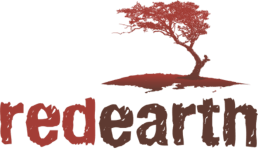The bear species known as the sloth bear (Melursus ursinus) is indigenous to the Indian subcontinent. The Sloth Bear has two subspecies, Melursus ursinus ursinus and Melursus ursinus inornatus, and its geographic range includes Bhutan, Sri Lanka, Nepal, and India. In Bangladesh, they have gone extinct locally. Only in Sri Lanka can you find the M.u inornatus, and it lives in the island’s north and east. Since they are mostly lowland species, sloth bears can be found in a variety of habitats, including grasslands, scrublands, and both dry and wet tropical forests. The IUCN lists sloth bears as a Vulnerable species in large part due to habitat loss, poaching for a variety of causes, and mainly human exploitation, whereby the nomadic Kalandar tribes capture these bears and educate them to dance for pay on the sides of the road. Sloth bears are adept climbers and can run faster than humans. Since they are nocturnal, it is uncommon to observe them on a safari, and of the five large species in Tadoba, they are the most challenging to find.

Large Paws, Blunt Claws
Sloth Bears are covered in a thick, shaggy black coat, and their weight can range from 60 to 140 kg based on their gender. Although they look similar, male and female bears differ in weight. Long snouts resembling anteaters’ are another distinguishing feature of sloth bears. They have a distinctive Y, V, or U-shaped marking on their chests that can be white, yellow, or brown in colour. The Sri Lankan subspecies lack this characteristic. Did you know that the Sloth Bear has the longest tail of any species of bear? They are renowned for having huge paws with sharp, sickle-shaped claws.
The Ant Hoover
Because sloth bears are myrmecophagous, they consume termites and ants as food. Additionally, they eat fruits and take honey from honeycombs as food. Sloth bears have special characteristics that make it easier for them to eat insects. Their large tongues and lack of upper incisors enable them to “vacuum up” insects. To find food, they may scrape tree bark with the help of their lower incisors. When they wish to break termite mounds or dig into the dirt, their curved claws come in handy. While feeding, they have the ability to seal their nostrils, keeping soil and insects out.
Starting a Family
The sloth bear’s breeding season varies depending on where it is geographically, however in India, it usually occurs between late spring and early summer. For sloth bears, the gestation cycle lasts around 210 days, or seven months. Before giving birth, female bears construct dens or dig caves. They protect their place of birth and spend a lot of time sleeping there. At the end of gestation, sows deliver one or two cubs.
Piggybacking on Mama
The eyes of a sloth bear cub do not open until one month after birth. Following their mother around until they are two years old, they stay in the den for another two to three months. Only the sloth bear, out of all the bear species, carries its offspring on its back. The adults’ thick hair helps the cubs hang on to them.
The Land of Karadi
Asia’s first specifically designed sanctuary for sloth bears is the Daroji Sloth Bear Sanctuary. The sanctuary was built in 1994, and it’s adjacent to Hampi, a historic city in Karnataka. The roughly 8,200-hectare Daroji region has a rugga ed terrain that is perfect for bears. The number of sloth bears in the area is said to be around 120, and they are frequently seen in the evenings when they emerge from their caves in search of food. Other species, like leopards, mongooses, peafowl, spurfowl, etc., can also be found in Daroji. The sanctuary is home to 150–200 different bird species and a wide variety of vegetation.
At our resort in Tadoba, visitors can take two safaris a day, one in the early morning before sunrise and the second in the late afternoon. Plan your vacation to Tadoba now to see these fascinating 5 large creatures and join us for an exhilarating open-jeep tour with trained naturalists.



